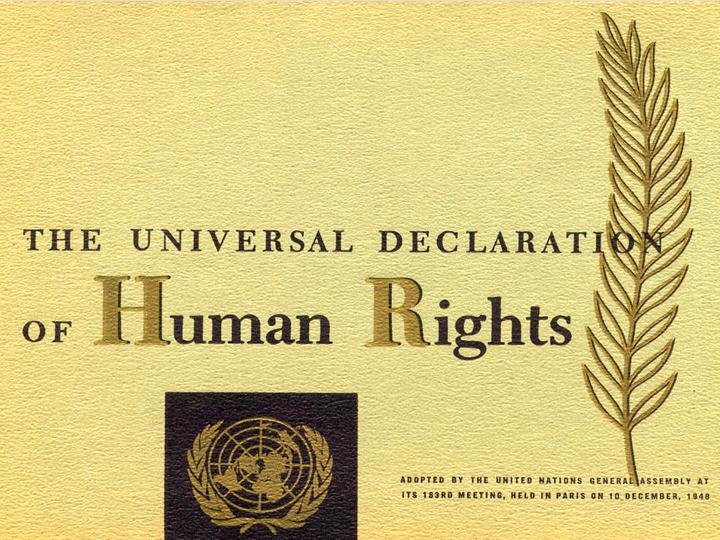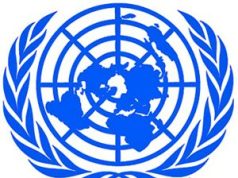
The Universal Declaration of Human Rights
The Universal Declaration of Human Rights is a charter accepted and adopted by the United Nations. Officially, the Universal Declaration of Human Rights is part of the International Bill of Human Rights which is an informal title given to two treaties created by the United Nations. The Universal Declaration of Human Rights came into being after WWII and it is representative of the first time in history where the world was mobilized to establish rights that all human beings are innately born with.
After the atrocities committed in Nazi Germany, there was a need for something of this nature as one of the United Nation’s main goals was to reiterate fundamental human rights for all. Several people were involved in drafting the United Nations, the Universal Declaration of Human Rights, and the forerunner being John Peters Humphrey. At the time of the drafting of the Universal Declaration of Human Rights he was the Director of the Division of Human Rights within the United Nations Secretariat. The Commission on Human Rights was commissioned to take on this project after Humphrey provided them with the initial draft. The United Nations wanted the members of this commission to be representative of the world and it was a very diverse group of people originating from countries ranging from Australia, Iran, and Yugoslavia to just name a few. A very famous author of the Universal Declaration of Human Rights was Eleanor Roosevelt who was the chairman.
The Universal Declaration of Human Rights was adopted by the United Nations General Assembly on December 10, 1948 by a landslide vote. No countries were against this charter, while 8 abstained; these countries were Soviet Bloc states. As of 1998, the Universal Declaration of Human Rights has been unanimously adopted by the United Nations General Assembly. Every year on December 10, the Universal Declaration of Human Rights is commemorated and it is known as Human Rights Day or International Human Rights Day.
The Universal Declaration of Human Rights has not only been adopted by the United Nations and been integral in many of their efforts but it has also become a part of customary international law. Customary international law is the basis of practice in the International Court of Justice. Apart from being institutional in international law and the United Nations, this charter has also had a tremendous influence in the constitutions of other countries. Furthermore, this document has also served as the foundation for two major United Nations human rights covenants.
The Universal Declaration of Human Rights has received both praise and criticism from dignitaries across the world. Officials around the world including Pope John Paul II as well as organizations such as the EU have praised this document. However, in certain parts of the world this charter does not have the same creed. Primarily in Islamic countries such as Sudan, Pakistan, Iran, and Saudi Arabia there has been criticism for the Universal Declaration of Human Rights. Their argument is that the charter does not take into account cultural and religious factors. While there is a certain level of criticism for this declaration, it is for the most part one of the defining pieces of work in the 20th century and has had a tremendously positive influence worldwide.
The Universal Declaration of Human Rights: A Landmark Document for Global Justice
Introduction
The Universal Declaration of Human Rights (UDHR) is a seminal document that has profoundly shaped the international human rights landscape. This article delves into the history, content, significance, and ongoing relevance of the UDHR.
1. Historical Context
The aftermath of World War II saw the international community reeling from the horrors of the Holocaust and the devastation caused by the war. In this climate, the United Nations (UN) was formed to promote peace and cooperation among nations. The UDHR was conceived as a response to the atrocities of the war and the need for a universal standard of human rights to prevent such horrors from happening again.
2. Content of the UDHR
The UDHR consists of 30 articles that articulate fundamental human rights. Key provisions include:
a. Right to Life, Liberty, and Security: Article 3 declares the right to life, liberty, and security of person as fundamental.
b. Equality and Non-Discrimination: Article 7 prohibits discrimination in the exercise of rights based on factors such as race, gender, religion, and more.
c. Freedom of Thought, Conscience, and Religion: Article 18 protects the freedom of thought, conscience, and religion.
d. Right to Work and Education: Articles 23 and 26 recognize the right to work and education, essential for individual well-being and societal progress.
e. Freedom of Expression: Article 19 enshrines the right to freedom of expression, including the freedom to seek, receive, and impart information and ideas.
3. Significance of the UDHR
The UDHR holds profound significance in various ways:
a. Moral and Ethical Foundation: It serves as a moral and ethical foundation for human rights, emphasizing the dignity and worth of every individual.
b. Legal Framework: The UDHR has influenced the creation of national and international human rights laws and treaties.
c. Universal Application: It applies to all people, regardless of their nationality, race, religion, or gender, making it a universal document.
d. Promoting Peace and Security: The UDHR is instrumental in advancing global peace and security by recognizing that human rights are essential for stable societies.
e. Advocacy and Awareness: It has inspired countless activists and organizations to advocate for human rights worldwide.
4. Achievements and Challenges
While the UDHR has made significant achievements in promoting human rights, it also faces challenges:
a. Legal Framework: The UDHR has led to the development of international human rights law, including conventions and treaties, strengthening its legal framework.
b. Raising Awareness: It has played a key role in raising awareness about human rights violations and promoting accountability.
c. Ongoing Violations: Human rights abuses persist globally, emphasizing the need for continued vigilance and advocacy.
d. Cultural and Political Differences: Cultural relativism and differing political ideologies sometimes challenge the universality of human rights.
e. Role of Non-State Actors: Non-state actors, including corporations and armed groups, can violate human rights, presenting a challenge for enforcement.
5. Ongoing Relevance
The UDHR remains highly relevant today for several reasons:
a. Contemporary Challenges: It addresses contemporary human rights challenges, including issues related to digital privacy, environmental rights, and gender equality.
b. Advocacy and Accountability: It continues to serve as a powerful advocacy tool and a basis for holding governments and entities accountable.
c. Global Crises: The UDHR is invoked during global crises, such as refugee situations and pandemics, to protect the rights of the most vulnerable.
d. Inspirational Document: It inspires individuals, organizations, and governments to strive for the protection and promotion of human rights.
e. Global Cooperation: The UDHR promotes international cooperation and diplomacy in the pursuit of peace and justice.
Conclusion
The Universal Declaration of Human Rights remains an enduring beacon of hope, guiding humanity toward a more just and compassionate world. Its principles continue to shape the human rights discourse, inspire advocacy, and provide a universal standard for human dignity and equality. As we confront the challenges of our time, the UDHR’s message of hope and justice remains as relevant as ever, reminding us that the pursuit of human rights is a shared global responsibility.






